




Burden Walker is a single player side-scrolling puzzle adventure game set in ancient China which tells the story of a porter who, after losing his horse, still manages to get all the cargo to the finish line by his own efforts. Player's goal is to deliver all cargo safely to the capital city, Guilin. The game blends traditional aesthetics with physics-based challenge mechanics. The visual identity draws inspiration from southern Chinese karst landscapes and folk culture, creating an immersive and poetic game world that supports both storytelling and gameplay.
Instructor: Eric Yang
TA: Jonathan Newman
Independent Game Designer & Developer:
Walter Xu
Duration: 3 Months
Game Engine: Unreal Engine 5
The core mechanic revolves around weight and balance. Players must choose which cargo to carry, stack it strategically, and maintain physical balance as they navigate narrow paths, swinging bridges, and sudden terrain changes. Each item has a different shape and value, and the player must make careful decisions based on limited backpack space. At the end of each level, the carried cargo is evaluated and scored, with a rating that reflects the player’s efficiency and choices. This adds an extra layer of replayability, motivating players to improve their performance in future runs.
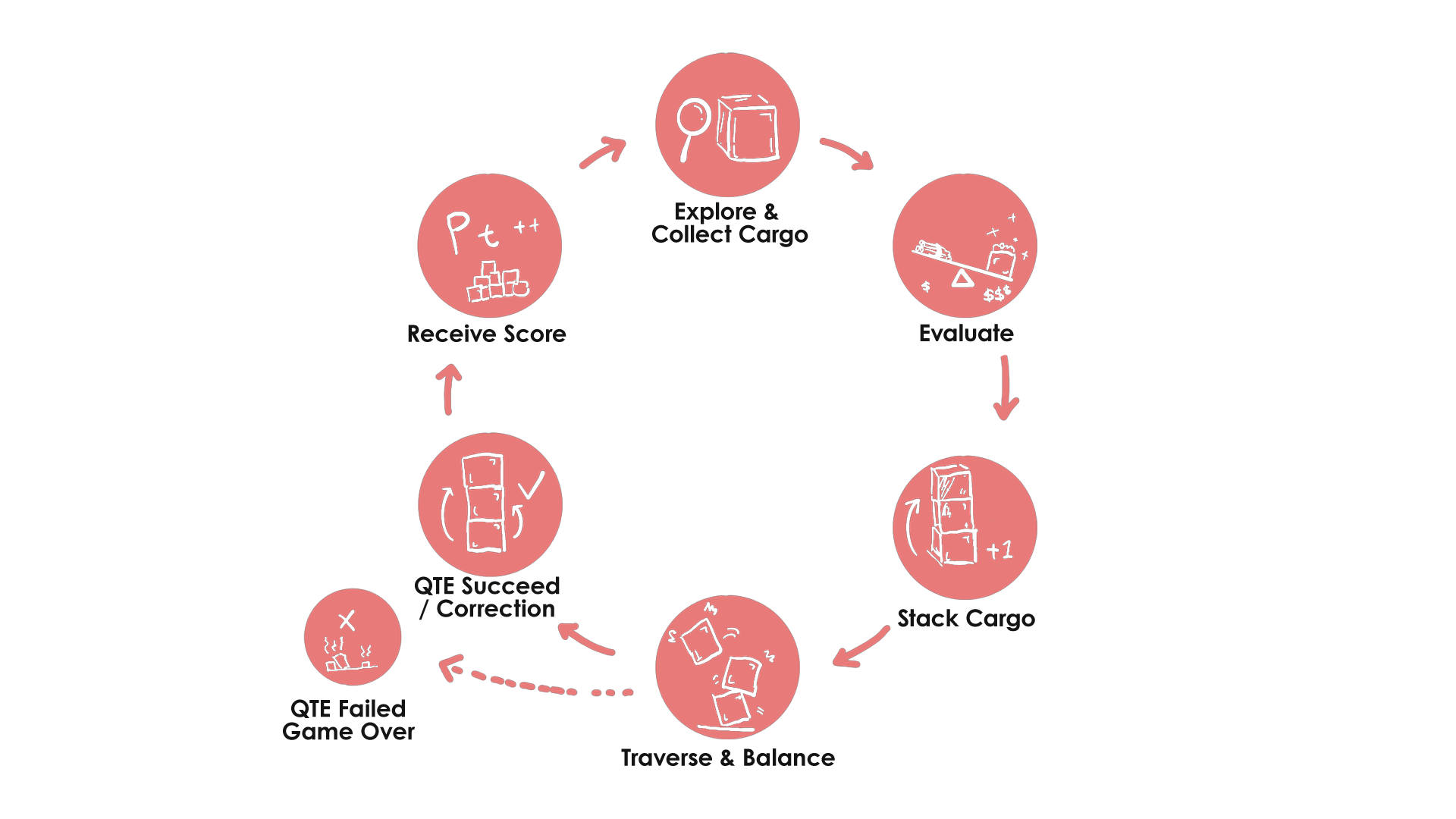
Core Loop
Quick-Time Events (QTEs) are triggered when the player loses control, testing reflexes to recover or risk losing progress. This system introduces tension and replayability while visually emphasizing the burden the character carries—both physically and emotionally. Despite its challenge, the gameplay also produces unexpected moments of humor and joy, creating a lighthearted, memorable experience as players wobble and scramble to keep their load intact.

QTE System / Balancing Cargo
The level flow across the three stages is structured to coordinate gameplay progression, mechanic onboarding, reward pacing, and emotional rhythm. Systems such as cargo stacking, balance maintenance, terrain navigation, NPC interaction, and puzzle solving are introduced gradually to shape a growing sense of burden and progression. Terrain variation, interaction points, and challenge timing are used to guide the emotional arc of the player's journey.
Rather than simply stacking content, the level layouts are designed to integrate spatial storytelling, emotional beats, and rule-based gameplay. Spatial structure is used to support narrative development, while challenge pacing is adjusted to maintain tension and player engagement across each stage.

The story follows a porter who must deliver valuable goods across the mountains to reach the courier station in the Gui Palace. Along the way, he meets various villagers and workers, each encounter adding to the emotional depth of his journey. The narrative is conveyed through environmental storytelling and short interactive cutscenes inspired by Chinese puppetry.
Symbolic items, such as embroidered talismans and tokens of gratitude, deepen the cultural authenticity and player connection to the protagonist’s world. Drawing inspiration from Guangxi’s rich folk traditions, we incorporated culturally significant objects like embroidered balls and bronze drums into the environment and item design, reinforcing the game's historical atmosphere and regional identity.
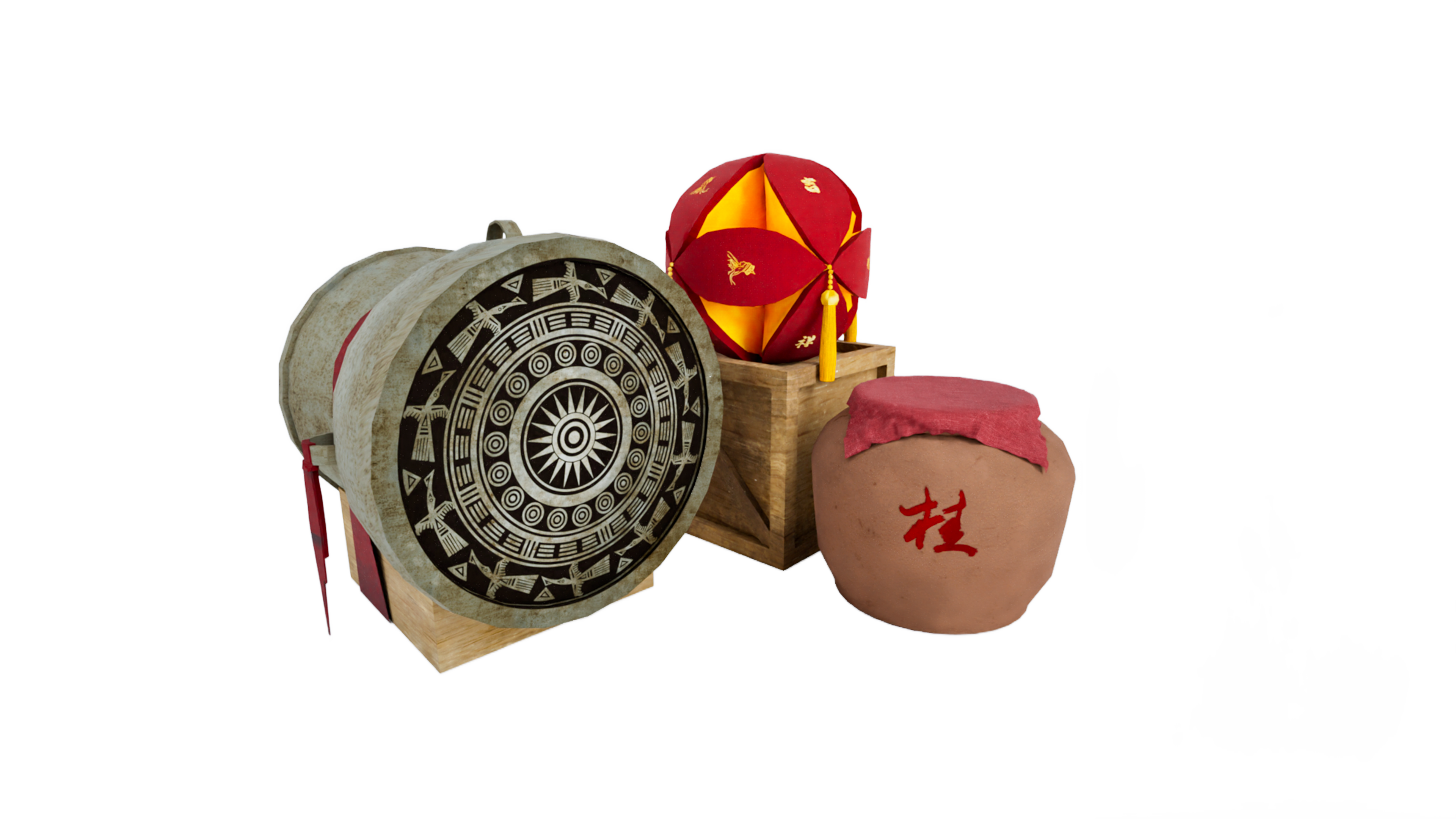
Culturally Significant Objects
The game’s visual environment is inspired by the natural landscapes and architectural heritage of Guilin, Guangxi, China. From steep mountain slopes and winding trails to bamboo forests and riverside villages, each setting was designed to reflect the region’s unique terrain and cultural atmosphere. Specific architectural references—including suspension bridges, traditional Zhuang-style houses, and the historical Jingjiang Princes’ City—were studied and translated into stylized in-game assets.
After gathering visual references and conducting contextual research, I personally modeled and implemented these environmental and architectural elements using Unreal Engine and external tools like Blender. Building these assets from the ground up gave me full creative control over how space and story are visually expressed. This allowed the environments to feel both immersive and purposeful, enriching the player’s connection to the world and its history.
The UI design of Burden Walker draws inspiration from the aesthetics of ancient Chinese handwritten documents. Interfaces are stylized with ink brush textures and red seal-like highlights, evoking the look of hand-painted scrolls. The interface minimizes reliance on modern textual overlays. Key interactions are communicated through visual cues and spatial arrangements, reducing on-screen distractions. The in-game map, shown here, mimics a traditional travel scroll, visually guiding the player’s journey without relying on detailed instructions or modern UI conventions.

Map Design
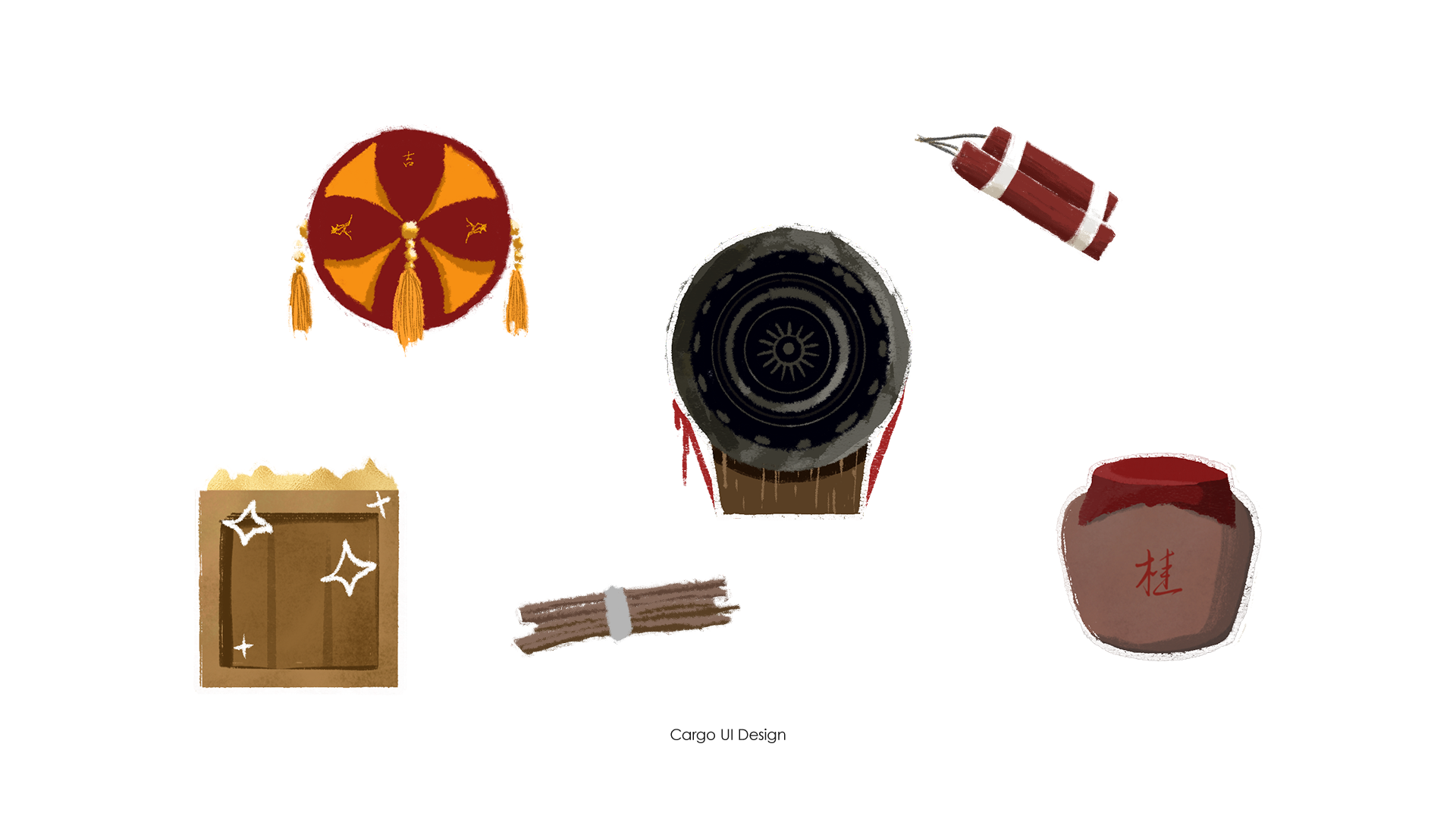
The development using Unreal Engine 5.4, with a focus on implementing gameplay systems through the Blueprint visual scripting framework. This allowed for rapid prototyping, clear logic structuring, and frequent iteration during development. Core mechanics—including cargo stacking, real-time balance detection, terrain-based challenge triggers and etc. were all created using modular Blueprint components.
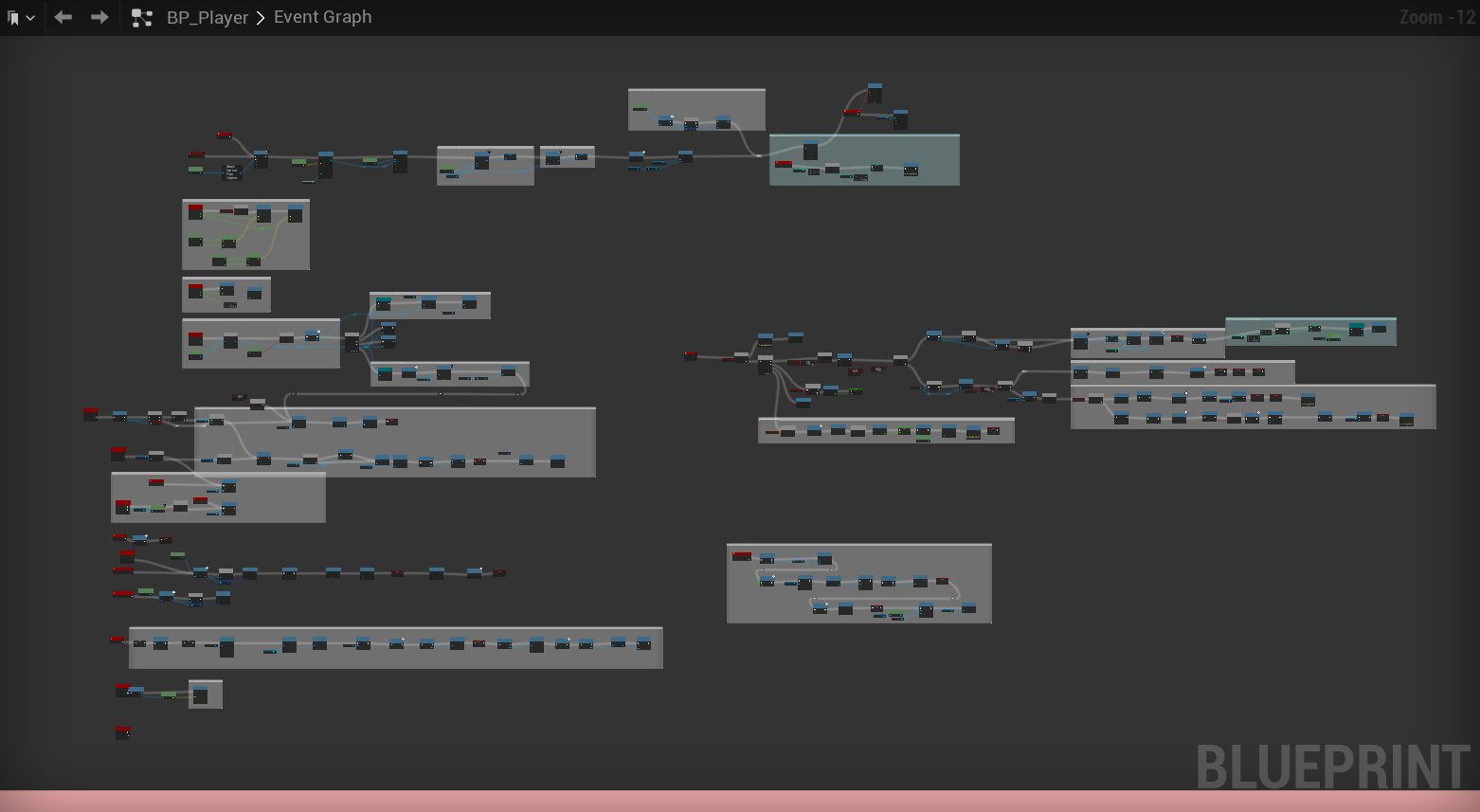
Player Blueprint Example Original
One of the most central systems I developed was a custom inventory and stacking interaction logic that bridges 3D world objects and 2D UI elements. This system allows players to drag 3D cargo models directly into the inventory interface, where they are represented as 2D icons. Each cargo item can be manually arranged within a limited grid-like inventory space, with support for reordering and auto-organizing.
Once a 2D icon is placed in the inventory, the corresponding 3D object is instantiated and physically attached to the player’s backpack in the world space, forming physics constraints with other cargo and the backpack itself. Conversely, players can also drag a 2D icon out of the inventory UI, causing the associated 3D object to materialize on the ground. This system enables seamless conversion between 3D and 2D representations of cargo and supports saving and loading states, allowing inventory data and object configurations to persist across sessions.
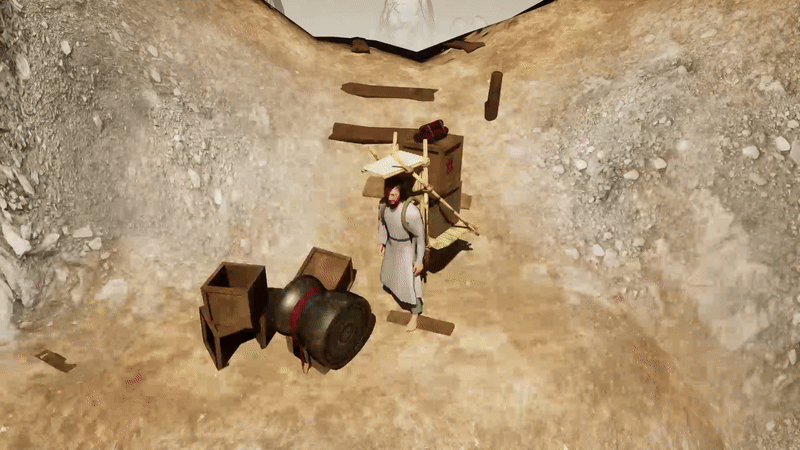
Inventory Interaction
To enhance realism and maintain a high level of visual fidelity, I integrated MetaHuman for character creation, allowing for detailed facial structure, realistic skin shading, and expressive animations. This provided a solid base for emotional storytelling and grounded character presence within the historical setting.
In addition to using MetaHuman, I designed and simulated historically inspired clothing using Marvelous Designer. The garments—such as layered robes, sashes, and shoulder cloth—were tailored to reflect traditional Chinese porter attire and were exported into Unreal Engine with proper cloth physics. These elements contributed to both the aesthetic consistency and dynamic feel of the characters, especially when in motion under physical strain or environmental conditions.
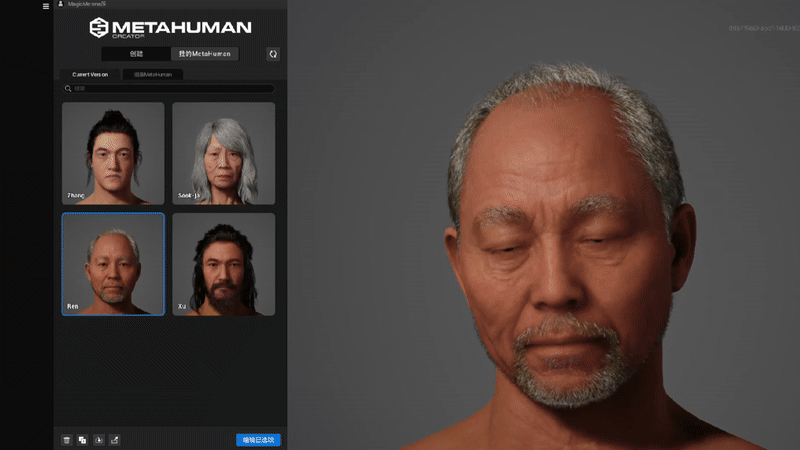
Character Design
User testing played a key role in refining Burden Walker’s core mechanics, interaction clarity, and pacing. Across three prototype rounds, I gathered feedback on stacking physics, QTE responses, inventory behavior, and terrain navigation through playtests involving both new and returning players.
Early tests helped validate the cargo stacking logic and balance system, but also revealed confusion around the QTE system—many players failed to notice its presence or understand how to react. In response, I designed a mandatory skill gate tutorial and revised the QTE description into more intuitive, action-based language. Inventory interaction also went through multiple revisions. Based on feedback, I adjusted drag-and-drop behavior, improved cargo placement logic, and introduced visual cues that better connected 2D icons to 3D objects. Visual guidance elements such as footprints, fog volumes, and spatial prompts were added to improve environmental readability without overwhelming the player.
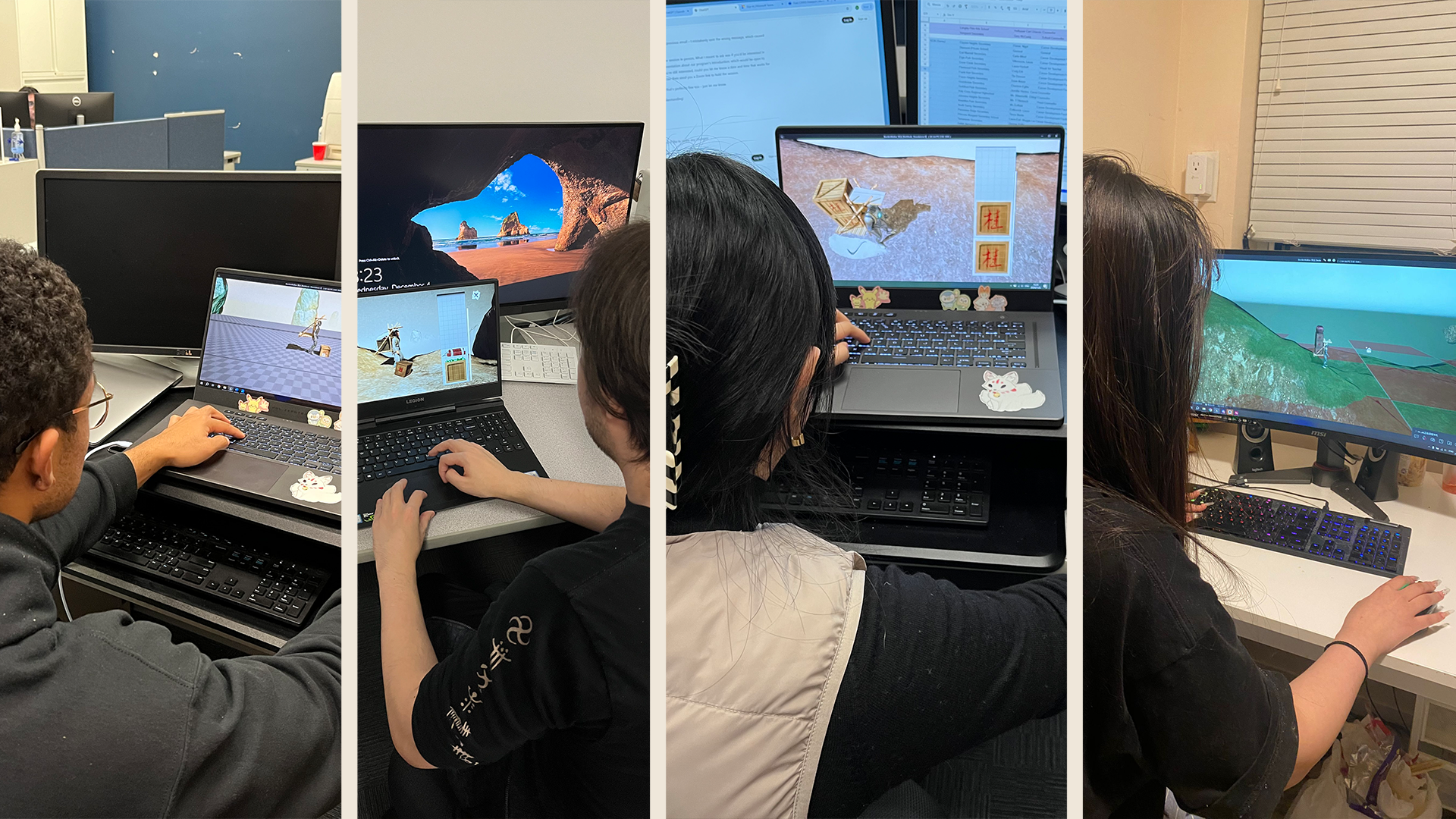
User Testing
Initially, I struggled with the choice of game engine. Having already completed two Unity projects, I wanted to explore a tool that could deliver higher visual fidelity, particularly in lighting and shading. Although Jonathan recommended sticking with Unity for ease—especially since I was working solo—I was drawn to the potential of Unreal Engine 5 and decided to challenge myself.
I quickly familiarized myself with UE5 and implemented core systems using Blueprints. While the Blueprint system offered a more intuitive visual approach than writing C++, it still demanded careful logic structuring and testing. Over time, I successfully built modular systems such as cargo stacking, real-time inventory conversion, and dynamic terrain triggers.
UE5’s rendering pipeline opened up a wide range of aesthetic possibilities, allowing me to achieve the stylized look I envisioned—particularly through dynamic lighting, volumetric fog, and atmospheric color grading. The availability of high-quality plugins and assets also accelerated production. Tools like MetaHuman enabled me to create detailed, expressive characters quickly, saving critical time within a tight development schedule.
Although some advanced features lacked extensive documentation, I was able to solve problems through experimentation and adapt my workflow accordingly. In retrospect, choosing UE5 was both ambitious and rewarding—it pushed me beyond my comfort zone and greatly expanded my capacity to execute both artistic and technical ideas.